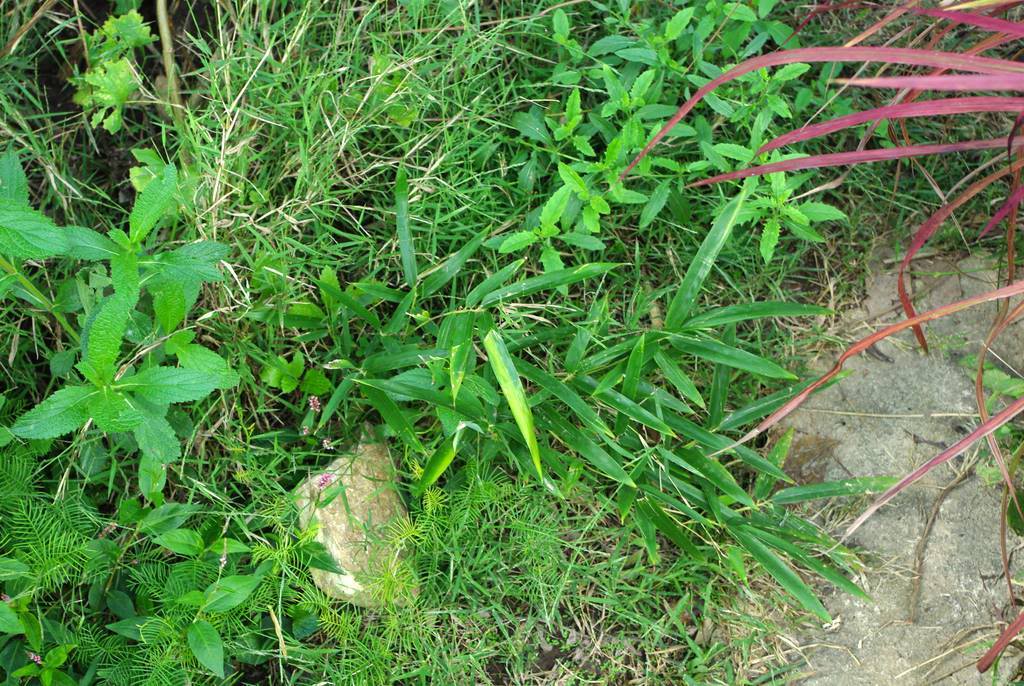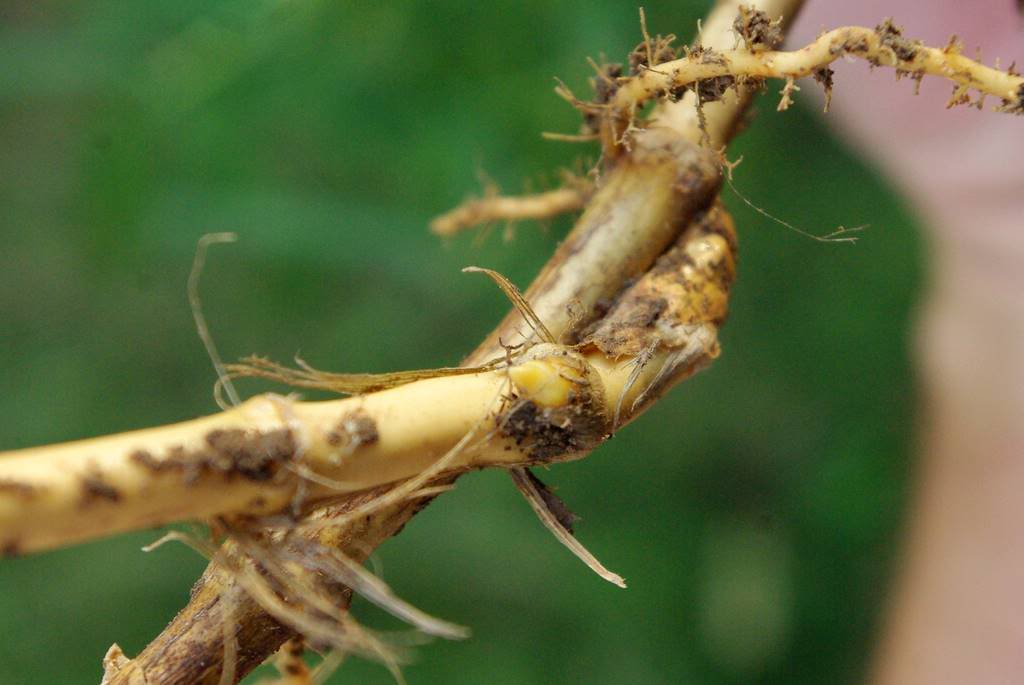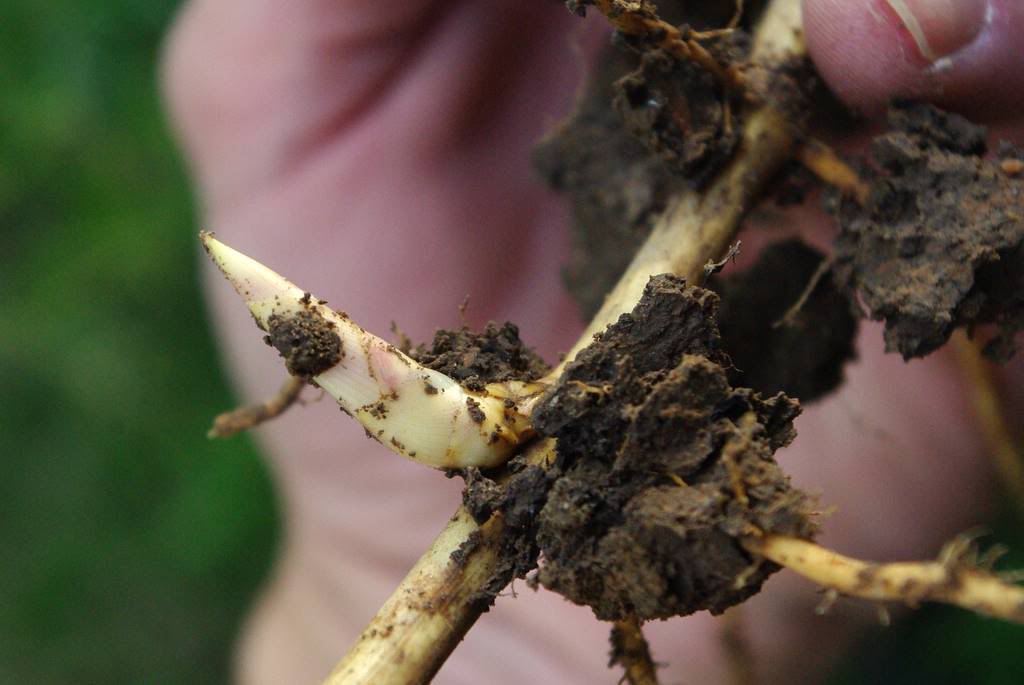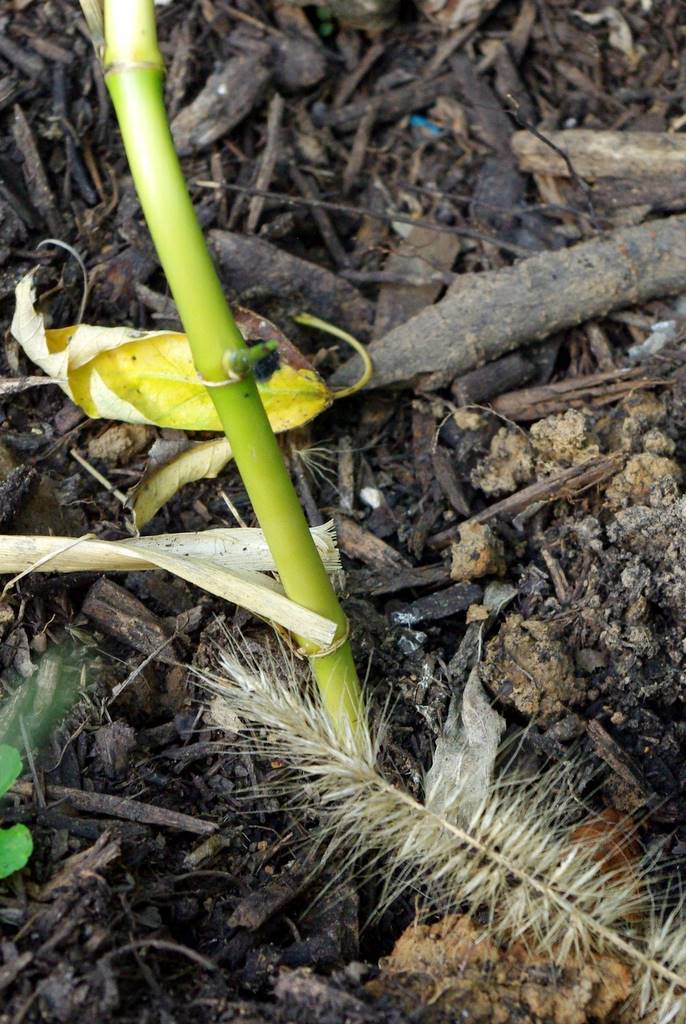Yesterday I showed you the bamboo rhizome that traveled along inside the rotted tree root. Today I have a couple more rhizome examples, but on a smaller scale. First, take a look at this photo:
It's a "wild" planting bed just under the south edge of my deck. It contains a mix of perennials, annuals, and weeds, and I usually let volunteers grow here -- I don't plan it. I also keep a few potted plants here as it does get a bit weedy and the pots give it some order. Notice anything that doesn't look like it should be here?
Right in the middle of that image is what looks like bamboo foliage, right? That's because it is bamboo foliage! Last year the potted bamboo I had here put a rhizome out one of the drainage holes and I never pulled the little rhizome out of the ground.
You can see the curved, now-dead rhizome end on the left. Since it put up a shoot this year which has obviously leafed out, I knew that the plant was growing underground waiting to surprise me next spring. So it's time to dig it out while still manageable:
I use a fork for this as I don't want to sever any rhizomes with a spade blade.
As you can see, a new rhizome has grown, there are more rhizome buds ready to grow, and there is also a bud starting to elongate for shooting in the spring:
I'll pot this little division up, and in a couple of years it will be a nice-sized plant. I could also use this as a trade plant, but probably won't. I'll have to see what trade opportunities present themselves though.
I've got a second example of a rhizome that is a small problem right now:
This Semiarundinaria okuboi rhizome came from the plant I trenched around recently, about 8' (2.4m) away:
The rhizome was severed from the main plant, and those "orphaned" rhizomes typically die, but since this one had its end sticking up out of the soil, it's starting to form branches:
If left alone those will produce leaves, which will give this rhizome section energy enough to start growing and spreading, forming a new self-sufficient plant. That's exactly what I don't need in this planting bed, so out it comes:
As you can see, there was already a rhizome branch coming off this one. That's probably because the original rhizome turned upward to surface. I wish I understood how plants "knew" what to do when growing. There must be some enzyme or hormone that is released by the upward-growing rhizome -- maybe as light hits it and it starts photosynthesizing -- that triggers the nearest dormant rhizome bud to awake and start growing too. I'm sure the answer is in my "Botany for Gardeners" book, but I just have to find the time to study it a bit more.
This one was difficult to dig up because it was a little deeper, but also because it had a tree root running directly underneath it:
So this one goes into a pot too:
The newer rhizome got a pretty sharp kink in it as I put it into the pot, but as I've seen before bamboo culms can survive with quite a bit of damage, so I'm guessing that rhizomes will too.
So I got a couple of new small plants, and have learned (again) to keep paying attention to those rhizomes that get "left behind" when moving a pot or digging a plant out. Running bamboo is not a "put it in the ground and forget it" type of plant unless you've got a lot of space.
.













You've been busy! You'll soon be able to open your own backyard bamboo nursery :-)
ReplyDeleteI'm finding that the GC boos I got from you are finally starting to perk up and put out some new foliage perhaps in response to cooler and wetter conditions.
ReplyDelete